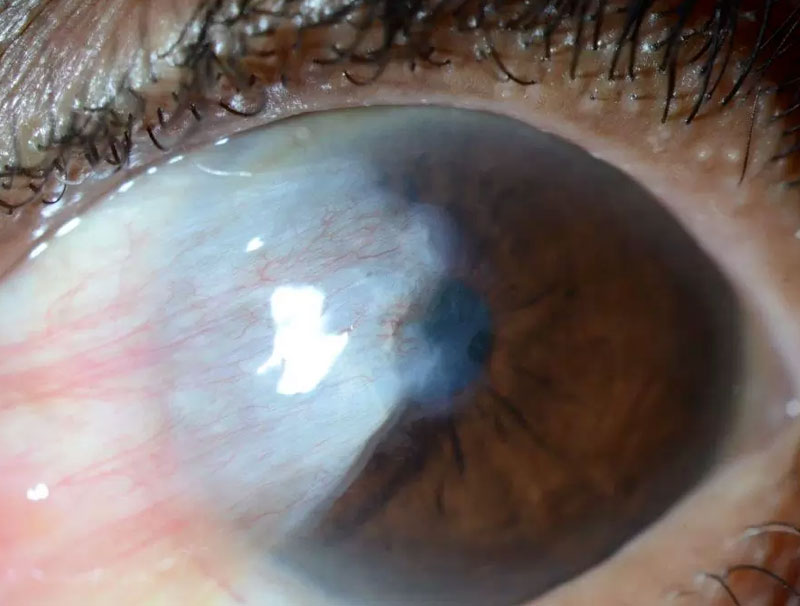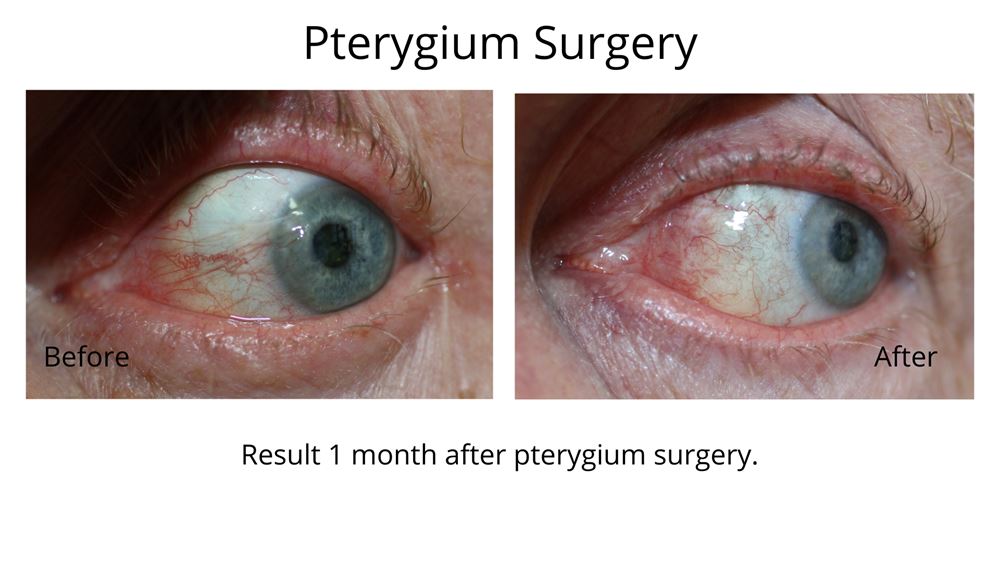Pinguecula and pterygium are common eye conditions that affect the conjunctiva, the clear tissue covering the eye’s white part and the eyelids’ inner surface. These conditions can cause discomfort and affect vision, necessitating a comprehensive understanding of their symptoms, causes, and treatment options.
What are Pinguecula and Pterygium?
Pinguecula
A pinguecula is a yellowish, benign growth on the conjunctiva. It typically appears on the part of the sclera (the white of the eye) closest to the nose. The growth is composed of protein, fat, and calcium deposits.
Symptoms of Pinguecula
- Yellowish, raised bump on the white part of the eye
- Dryness and irritation
- Redness and inflammation
- The feeling of a foreign body in the eye
Pterygium
A pterygium is a growth of fleshy tissue that may start as a pinguecula but extends onto the cornea, potentially impairing vision. This condition is often referred to as “surfer’s eye” due to its prevalence among individuals who spend significant time outdoors.

Symptoms of Pterygium
- Fleshy, triangular growth on the white of the eye, potentially extending onto the cornea
- Redness and inflammation
- Dry, itchy eyes
- Blurred vision if the cornea is affected
- Foreign body sensation in the eye
Causes and Risk Factors
Both pinguecula and pterygium are associated with prolonged exposure to ultraviolet (UV) light, wind, dust, and other environmental irritants.
Key Risk Factors
- UV Exposure: Prolonged exposure to UV rays from the sun is a major risk factor.
- Environmental Irritants: Wind, dust, and pollution can contribute to the development of these conditions.
- Age: More common in middle-aged and older adults.
- Geographical Location: Higher incidence in people living near the equator or in sunny climates.
- Outdoor Activities: Those who spend a lot of time outdoors, such as surfers and farmers, are at higher risk.

Diagnosis and Evaluation
Diagnosis typically involves a thorough eye examination by an ophthalmologist. The use of slit-lamp biomicroscopy helps in evaluating the extent and nature of the growth.
Diagnostic Tools
- Slit-Lamp Examination: Provides a detailed view of the conjunctiva and cornea.
- Visual Acuity Test: Assesses if vision is affected.
- Photographs: May be taken to monitor the growth over time.
Treatment Options
Conservative Management
For mild cases, conservative treatment focuses on alleviating symptoms and preventing further irritation.
- Lubricating Eye Drops: Help to reduce dryness and discomfort.
- Anti-Inflammatory Medications: Eye drops or ointments containing steroids to reduce inflammation.
- Protective Eyewear: Sunglasses that block UV rays to prevent further growth.
Surgical Intervention
In cases where the pterygium significantly affects vision or causes severe discomfort, surgical removal may be necessary.
- Excision: The growth is surgically removed from the eye.
- Conjunctival Autografting: Healthy tissue from another part of the conjunctiva is used to cover the area where the pterygium was removed, reducing the risk of recurrence.
- Amniotic Membrane Transplantation: Utilizes a graft from the amniotic membrane to promote healing and reduce inflammation.

Post-Surgical Care
- Medication: Post-operative use of anti-inflammatory and antibiotic eye drops.
- Follow-Up: Regular check-ups to monitor healing and detect any recurrence early.
Prevention Strategies
Protective Measures
- UV Protection: Wearing sunglasses with UV protection and wide-brimmed hats.
- Artificial Tears: Regular use of lubricating eye drops to keep the eyes moist.
- Environmental Precautions: Using protective eyewear in dusty or windy environments.
Lifestyle Adjustments
- Reduce Sun Exposure: Limit time spent in direct sunlight, especially during peak hours.
- Hydration: Maintain good hydration to support eye health.
Understanding the causes, symptoms, and treatment options for pinguecula and pterygium is crucial for effective management and prevention. By taking appropriate protective measures and seeking timely medical advice, individuals can maintain eye health and prevent the progression of these conditions.
To learn more about Dr Anthony Maloof – click here!
To request an appointment, click here!


